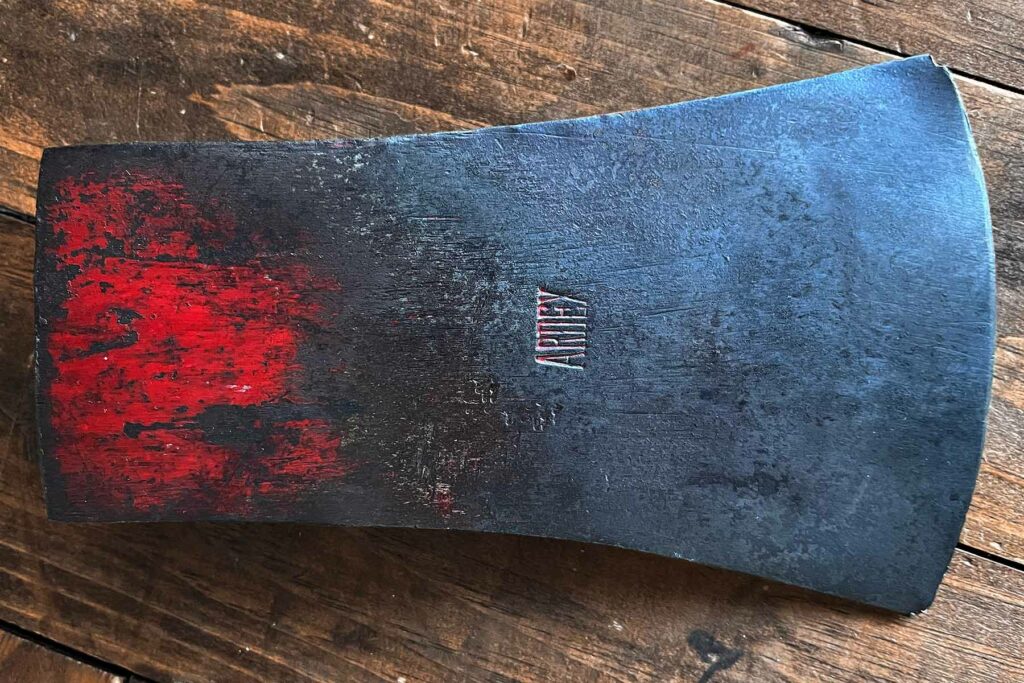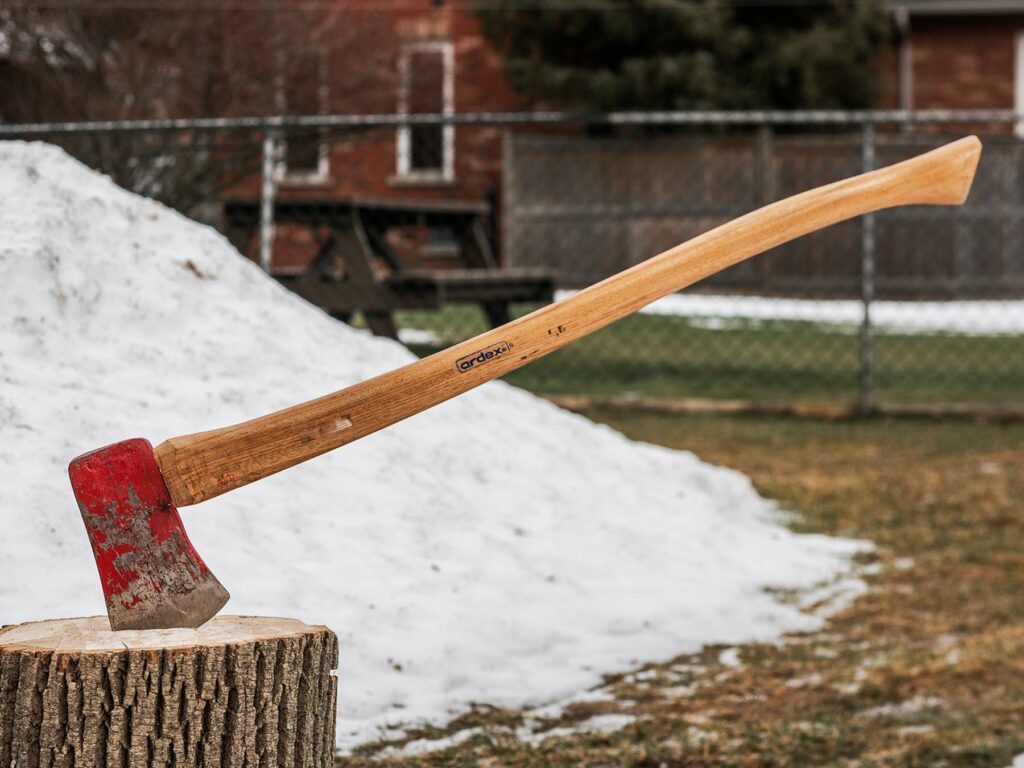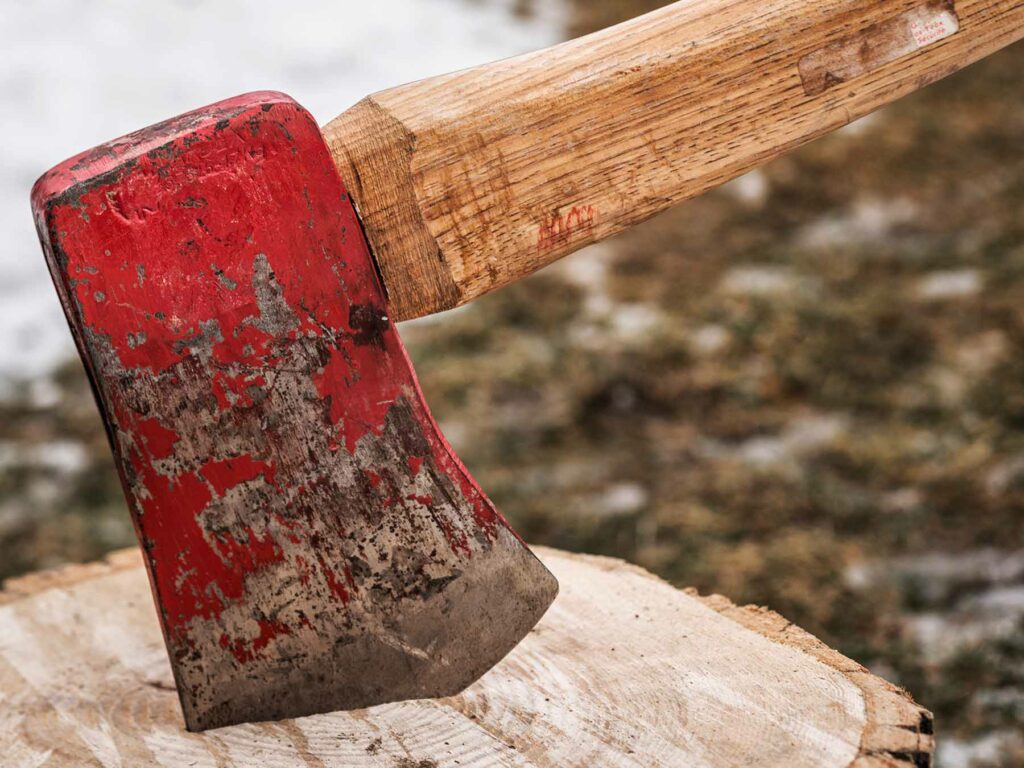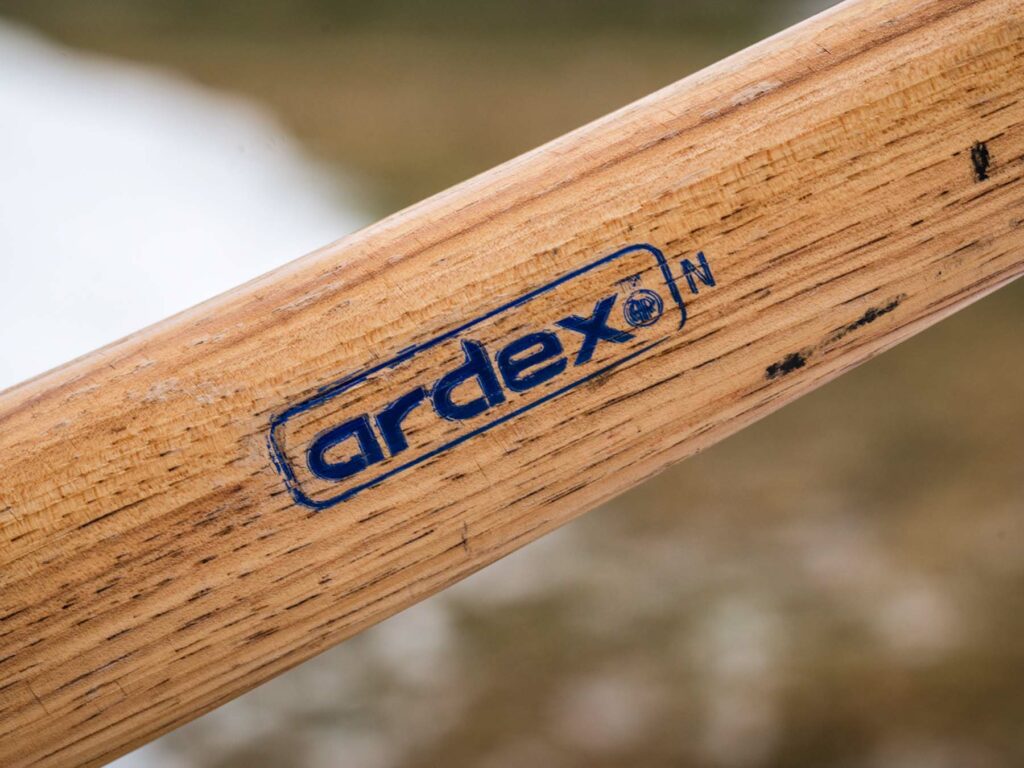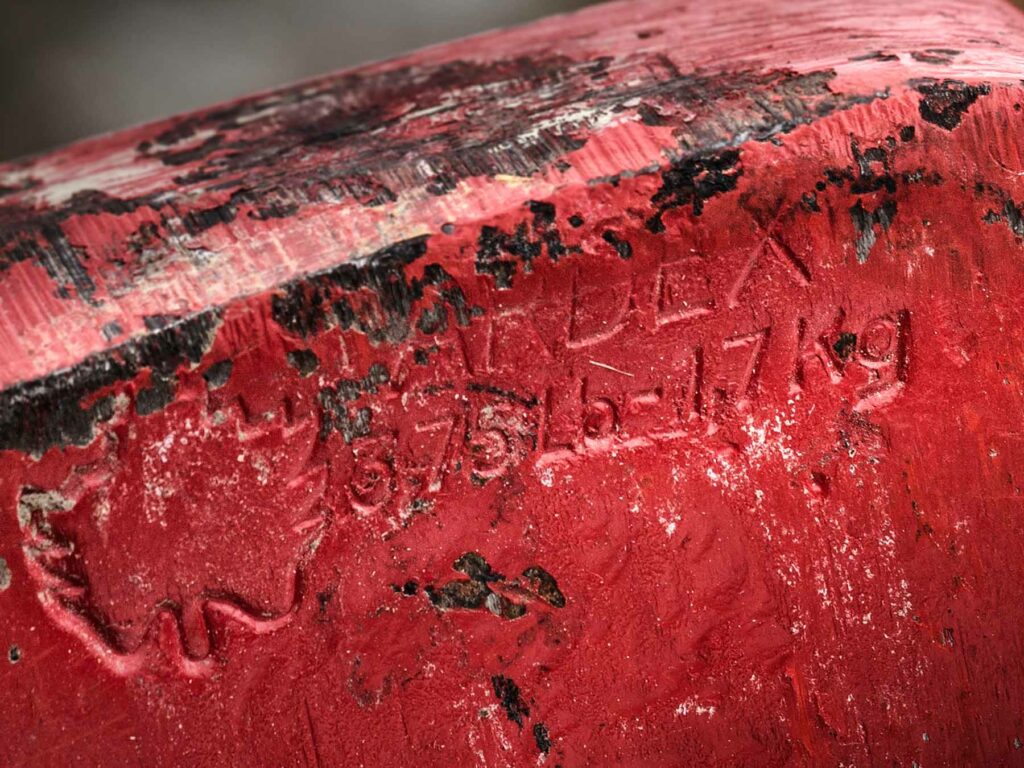The Ardex Axe: The Last Canadian-Made Axe?
1956 – 1985*
H. R. Radomski & Co. Limited
Europe | Canada
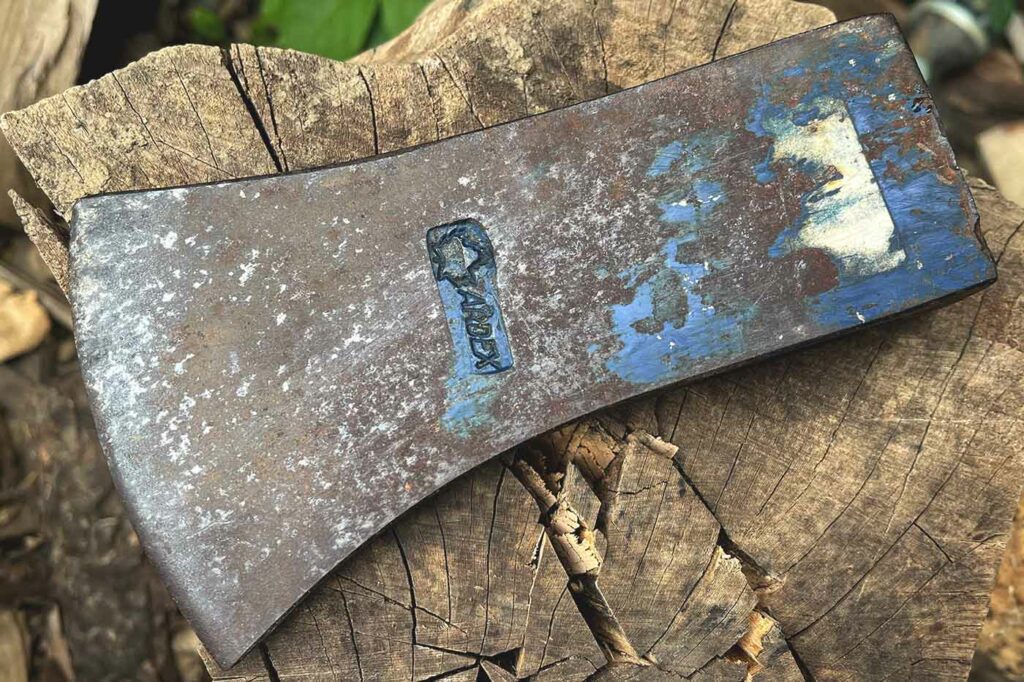
The Ardex brand began in 1956 as a line of European-made hand tools owned and imported into Canada by H.R. Radomski & Co Limited out of Toronto. Axes were imported from Germany, Italy, and Sweden until 1977 when Radomski began to make axes in Canada. The Canadian axes were made into the 1980s.
By the time Ardex axes started being made in Canada, almost every other Canadian axe maker was out of business or on their last legs. So their production into the mid-1980s sets up Ardex as (potentially) the last axe manufacturer in Canada.
Imported Ardex axes only have the word mark “Ardex”, while Canadian-made Ardex axes include the maple leaf in the stamp.
The only contender is Strikemaster Canada from Gravenhurst, ON – which may have made axes as late as the 2000s – but it has yet to be confirmed if the heads were locally made or imported, and they were a smaller opperation.
H.R. Radomski & Ardex
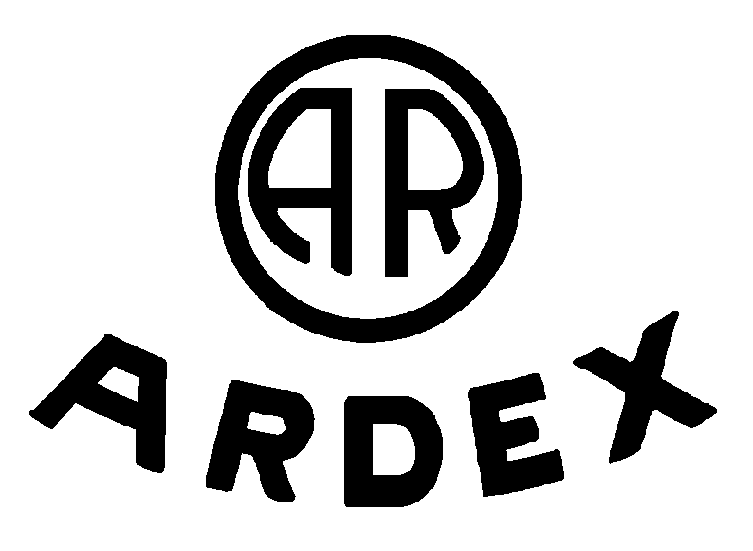
H. R . Radomski & Co. LTD was founded as an importer and distributor of European tools, based in Toronto, Ontario.
The company started between 1955-56 and was officially listed as part of the Canadian Hardware and Tool industry by Government reports in 1957. A New York office opened in the early 60s.(3,5)
Radomski imported tools from well-known European manufacturers such as Iltis Oxhead, Prima, and True Friends, as well as tools under their own brand Ardex.
The Ardex trademark was registered in March 1958, but the brand was first used in August 1956. Ardex was used for a broad range of tools including oilers, hammers, chisels, drills, drill bits, hand-grinders, shears, draw knives, saws, vises, and axes. (1)
Ardex tools were imported from many countries including Germany, Sweden, Italy, and Ireland . (7)
While the main office for the company was always located in Toronto, the location of the Canadian-based axe factory in the late 70s is currently unknown. The founder Heljodor Radomski passed away in 1985, but it’s unclear when the company ceased operations.
Heljodor Radomski
May 8, 1908 – May 18, 1985
The company was founded by Heljodor Radomski – a Polish businessman with a doctorate in Economics. He held a position with the United Nations before immigrating to Canada in 1950.
Mr. Radomski lived in Kitchener Ontario, before moving to Toronto with his (then) wife Maria to start the import/export business. (11,12)
Imported Ardex Axes
It’s hard to pinpoint exactly where imported Ardex axes were made, but evidence suggests they were mostly made in Germany and some possibly in Sweden.
Both countries were major exporters of axes to Canada at this time, and a Radomski catalog from 1964 lists both German and Swedish axes being sold, alongside Ardex hatchets (whose origins are not listed). (3)
German Ardex Axes
The majority of Ardex axes were likely made in Germany. They share many glaring similarities in finish, shape, and markings with other West German axes from around this time. They are felling axes and hatchets with a slightly crude finish and a simple text logo and weight stamped on the left side of the head.
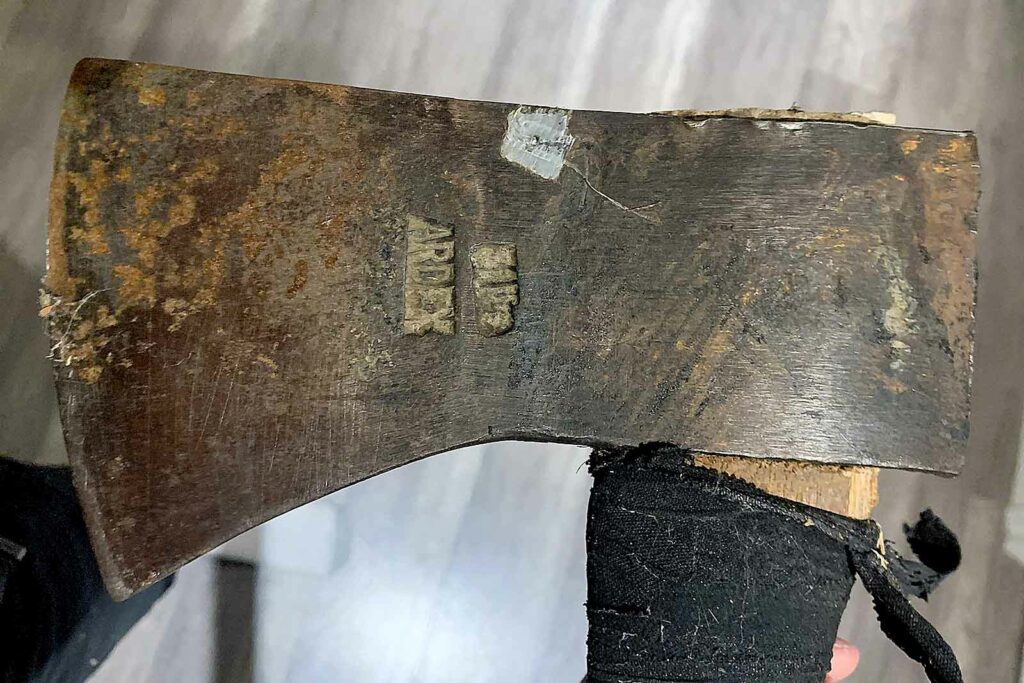
They are near identical to other imported axes from the time axes stamped “RUHR W. GERMANY” (on the reverse side). Note the distinct shape with a slightly sloping pole and the position of the stamping.
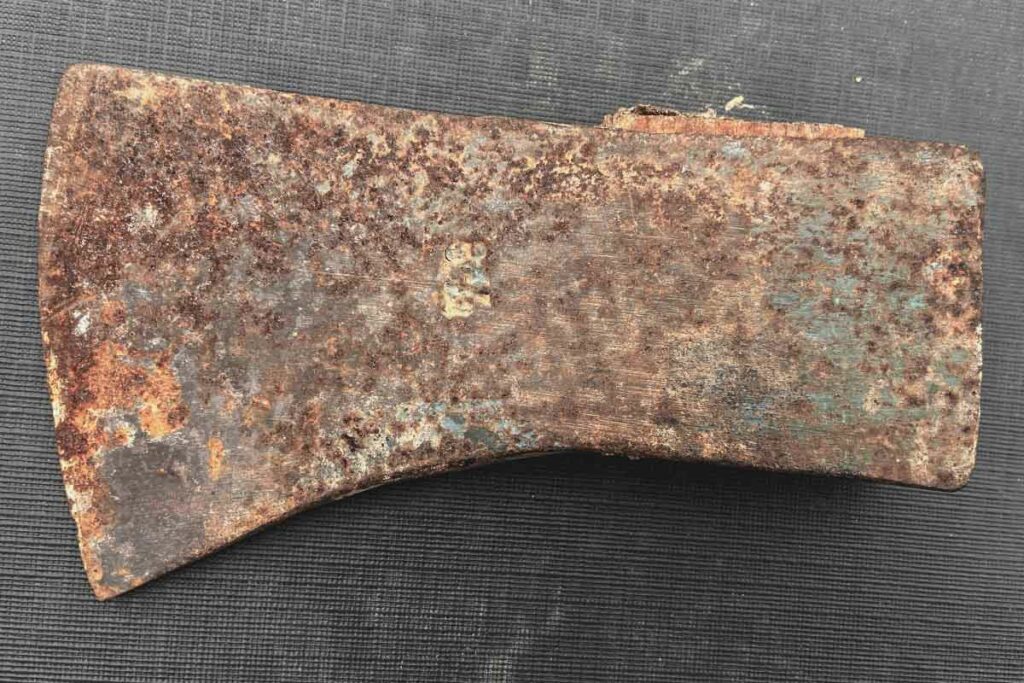
There is also a very interesting example of an Ardex axe with a sticker that is very clearly a direct lift from the Ox-head axes Radomski was also importing. This does not mean Ox-head made the Ardex axes (though they could have), only that Radomski was likely trying to coast off the existing success of the german brand.
Unique German Pattern Ardex Axe
A large German-style felling axe marked with the Circle AR logo registered in the Ardex trademark surfaced in the US, where Radomski exported tools as well.
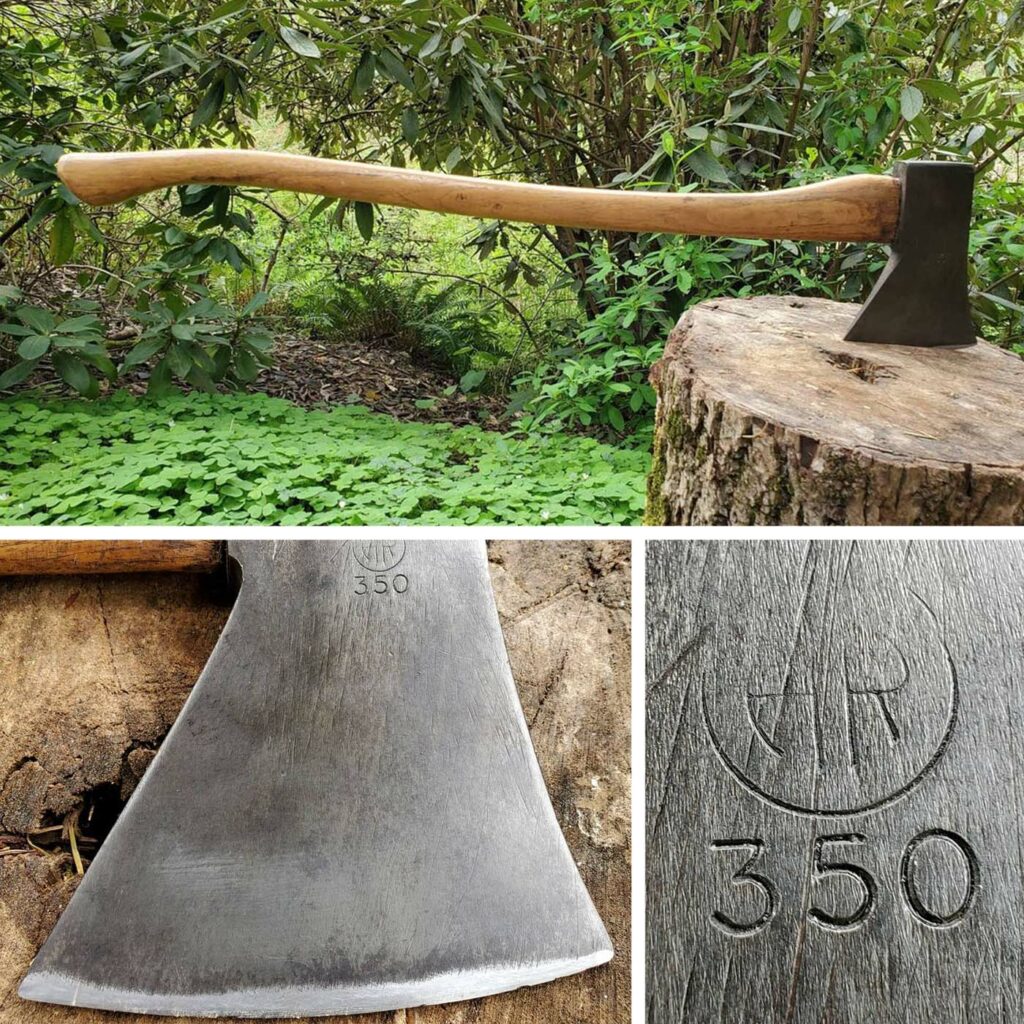
This style of axe head was less popular in North America, which might suggest it was an early import before Radomski switched to the American style of felling head. This logo is also not known to have been stamped on any other axes but was used on paper labels.
The 350 mark, is also unique as it seems to be pointless. European axes are often stamped like this to show the weight in grams, but this axe would be more like 1500g (not 350). Perhaps an attempt to mark it as 3.5 lbs that didn’t translate?
Possible Swedish Ardex
Radomski imported Swedish axes as early as 1964, and he was reported doing business with a Swedish manufacturer around the time of his move to Canadian production (more on that later).
Axe in author’s collection, thanks to Lucky Axe Co.
This example is unique, in that it has a different branding and is a different style of axe altogether from any other Ardex I have seen. I suspect it is Swedish-made because the style and finish quality is much closer to other vintage Swedish axes (but that is far from proof).
Italian Ardex All-Steel Hatchet
This seems to be a unique one-off, but Ardex sold an all-steel hatchet stamped “Drop Forged in Italy”. This hatchet is mentioned in the 1964 catalog and would have come with a rubber grip.(3)
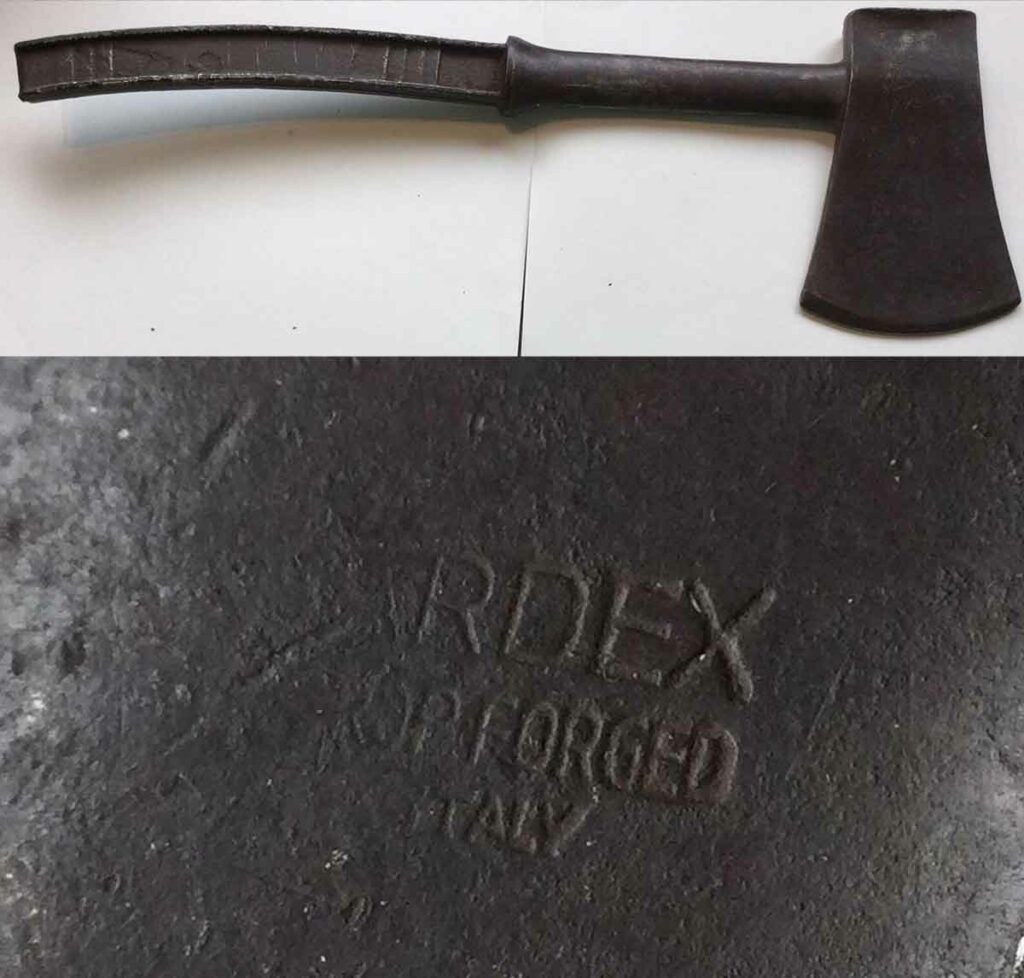
Ardex was also known for importing snips, oilers, and drill parts from Italy. (7)
Canadian-Made Ardex Axes
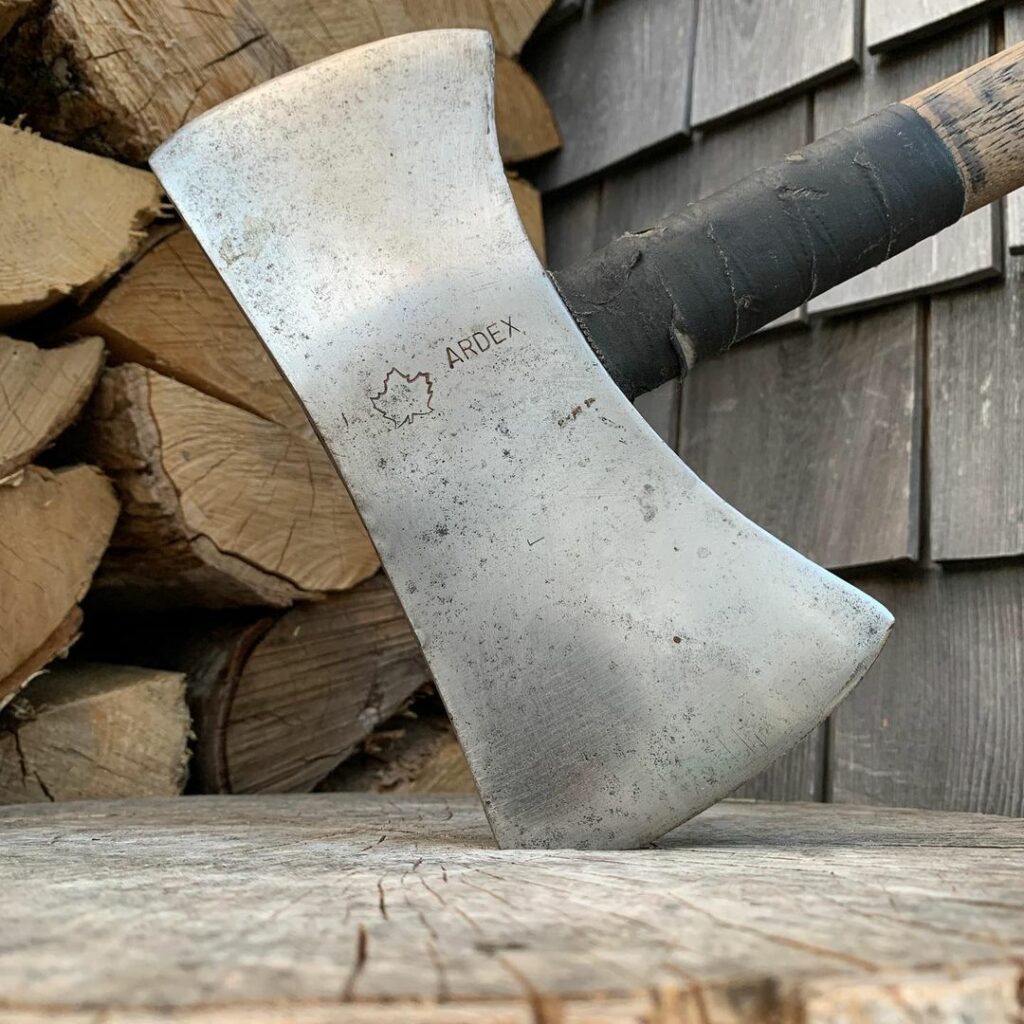
Ardex advertising from 1981 states Ardex was manufactured in Canada since 1977.
H. R. Radomski had tried to start producing axes sooner in Canada sooner but was delayed in training a Canadian workforce due to interference from the Swedish government (on behalf of their own axe industry). (4)
“…Radomski purchased the plant from one of these defunct [Swedish] operations. He also arranged for Swedish workers to come to Canada and set things up for him. At this point the Swedish government, under pressure from their own industry, stepped in and ‘Scotched’ the scheme. Radomski had to wait until the mid seventies until he was able to recruit some Polish experts to come in, set up the machinery and train Canadians to use it. When last heard from, Mr. Radomski was producing axes under the old Walters ‘Ottawa Chief’ label.”
“The Swedish Axe in North America” by Robin Wyllie,
The Chronicle of the Early American Industries Association, Vol. 39, No. 4, December 1986
Unfortunately, it’s unclear who the Swedish manufacturer was, where the Canadian factory was located when Ardex axe production stopped, and what was going on with using the old Walters labels (Walters shut down in 1973).
Could Ardex have used the old Walters factory, or purchased the machinery – gaining access to the labels? Who knows.
The Red Ardex Axes
The Red Ardex axes were likely earlier Canadian production – although this has not been confirmed.
The red axes have a stamp that includes the head weight in both metric and imperial, which would be an extra step. Extra details like this are often dropped to simplify production and save money – especially in a dying industry. The handle also shows much more complicated branding that includes the original circular logo.
There also seems to be a broader range of patterns, including the double-bit which was likely cut from production to simplify the lineup.
“The Blue Canadian” Ardex Axe
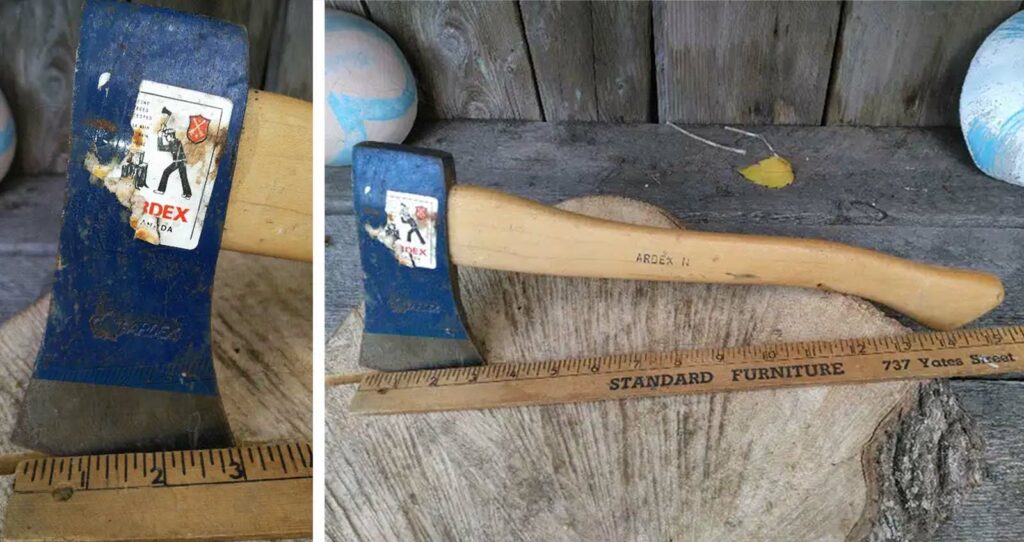
The blue axes were likely the final version of the Ardex axe. 1981 advertising explicitly markets the brand as “The Blue Canadian Ardex” and examples housed at the Museum of Science and Technology (1982) also show blue paint. (2,6,)
Blue Ardex axes have the simplified leaf and name logo, either on the cheek or at the pole depending on the pattern. Typically on the left side of the head – although examples have been seen stamped on the right (probably by mistake).
I believe blue was used to help the brand stand out from many other options (like Garant), and possibly try to associate with the quality of the blue Swedish axes in the market (Agdor). Although that is just a hunch.
These axes would also have a paper label (above or below the stamped logo), and a “Made in Canada” label applied to the back.
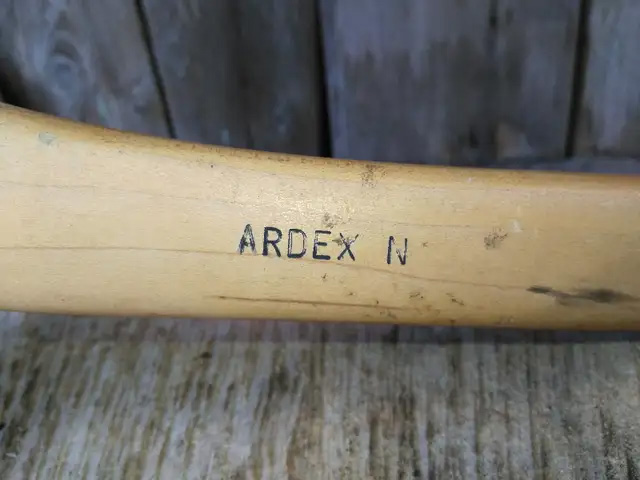
Some Ardex branded handles have been seen – sometimes with an additional letter (likely a batch indicator).
Sources
- Government of Canada – Trademark Database
- “Axes made, found or sold in Canada” by Allan Klenman, 1981.
- McMaster University Library – Canadian Company Catalogues Collection
- “The Swedish Axe in North America” by Robin Wyllie, The Chronicle of the Early American Industries Association, Vol. 39, No. 4, December 1986
- The Hardware, Tools and Cutlery Industry 1957 – Government of Canada
- BladeForum – About Ardex Axes
- Progress-is-fine Blog
- East Coast Vintage Tools
- Truly-the-real-guy (reddit)
- Ebay seller andelli
- Thomson Reuters
- Torrance Funeral Home – Maria Schliewinsky
- Johnny Axman
- Ken – Kijiji

